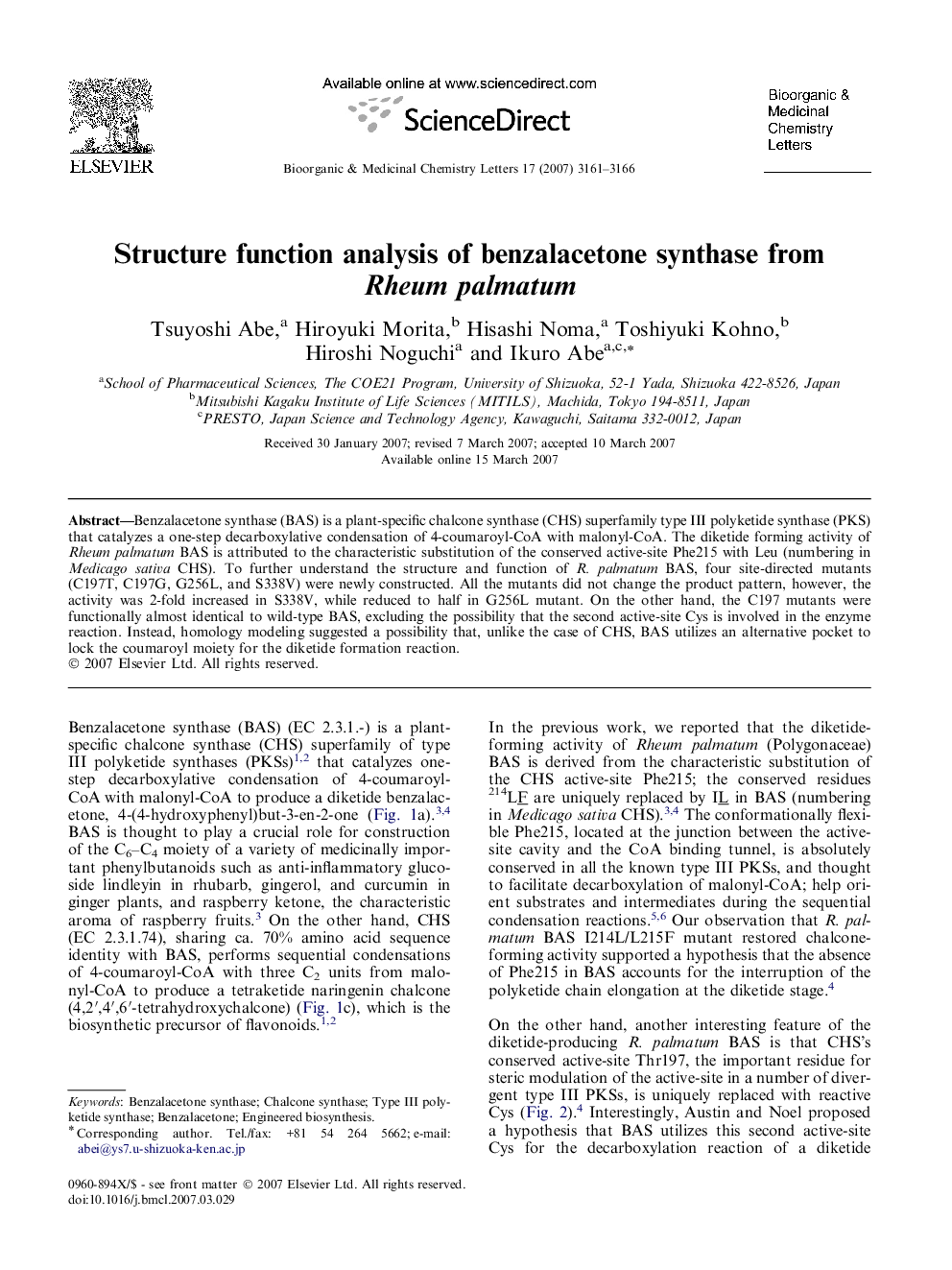| Article ID | Journal | Published Year | Pages | File Type |
|---|---|---|---|---|
| 1366568 | Bioorganic & Medicinal Chemistry Letters | 2007 | 6 Pages |
Benzalacetone synthase (BAS) is a plant-specific chalcone synthase (CHS) superfamily type III polyketide synthase (PKS) that catalyzes a one-step decarboxylative condensation of 4-coumaroyl-CoA with malonyl-CoA. The diketide forming activity of Rheum palmatum BAS is attributed to the characteristic substitution of the conserved active-site Phe215 with Leu (numbering in Medicago sativa CHS). To further understand the structure and function of R. palmatum BAS, four site-directed mutants (C197T, C197G, G256L, and S338V) were newly constructed. All the mutants did not change the product pattern, however, the activity was 2-fold increased in S338V, while reduced to half in G256L mutant. On the other hand, the C197 mutants were functionally almost identical to wild-type BAS, excluding the possibility that the second active-site Cys is involved in the enzyme reaction. Instead, homology modeling suggested a possibility that, unlike the case of CHS, BAS utilizes an alternative pocket to lock the coumaroyl moiety for the diketide formation reaction.
Graphical abstractStructure function analysis of benzalacetone synthase from Rheum palmatum is reported.Figure optionsDownload full-size imageDownload as PowerPoint slide
